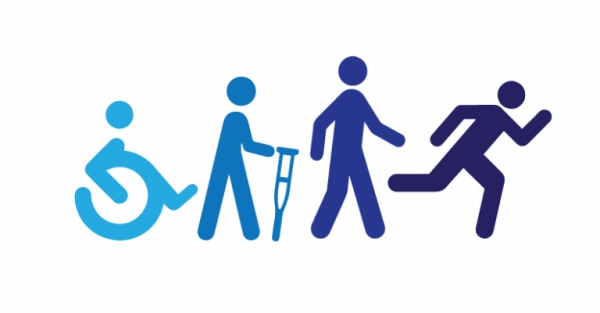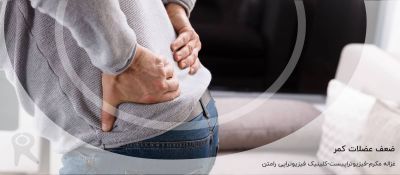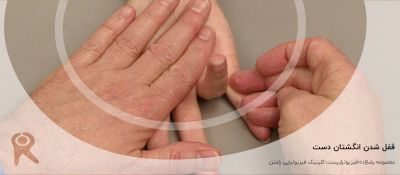Asthma is caused by inflammation and constriction of bronchial walls due to hyper-reactivity of their smooth muscle, thereby leading to a series of spasmodic attacks of wheezing and shortness of breath (SOB). Various factors can contribute to the cause of asthma: exposure to cigarette smoke, climate change, physical exertion or emotional stress. It normally begins during childhood and the disease is commonly triggered by viral infection.
Asthma can be diagnosed by the presence of the various signs and symptoms. Diagnosis is normally confirmed by presenting a response to a inhaled bronchodialator. In addition, pulmonary function tests, chest x-rays and blood tests can also be carried out to confirm the diagnosis.
In childhood, the first symptoms may appear before the age of five years. However, diagnosing asthma in young children under 5 years is difficult due to the fact that other childhood conditions may have similar symptoms. Therefore, the doctor is reliant upon the child's medical history, their symptoms and physical examinations in order to confirm a diagnosis. Moreover, the doctor could also carry out a 4-6 week asthma medication trial and monitor the child's response.
Types of Asthma
Allergic asthma:
there is often a tie between allergies and asthma. not everyone who has allergies has asthma, and everyone with asthma has allergies. but allergens such as pollen, dust and pet dander can trigger asthma symptoms and asthma attacks in certain people.
Non-allergic asthma:
- It is also called intrinsic asthma and it usually develops after the age of 30 years where allergies do not play any role.Non-Allergic (intrinsic) asthma is triggered by factors not related to allergies, it is likely triggered by respiratory irritation substances (e.g cleaning agents, perfume and smoking). Like allergic asthma, non-allergic asthma is characterized by airway obstruction and inflammation that is at least partially reversible with medication, however symptoms in this type of asthma are not associated with an allergic reaction. Many of the symptoms of allergic and non-allergic asthma are the same, but non-allergic asthma is triggered by other factors such as anxiety, stress, exercise, cold air, dry air, hyperventilation, smoke, viruses or other irritants. In non-allergic asthma, the immune system is not involved in the reaction.
Exercise Induced Asthma:
- Exercise induced asthma is a type of asthma triggered by exercise or physical exertion.It affects anyone and at any age. It is caused by lack of heat and moisture in the lungs which occurs during strenuous exercises. Many people with asthma experience some degree of symptoms with exercise. However, there are many people without asthma, including Olympic athletes, who develop symptoms only during exercise. With exercise-induced asthma, airway narrowing peaks 5 to 20 minutes after exercise begins, making it difficult to catch your breath. The symptoms begin within few minutes of exercise and peak or worsen a few minutes after stopping exercise. Symptoms of an asthma attack which is wheezing and coughing may be present.
Nocturnal Asthma:
- It is also called nighttime asthma and it is the type of asthma that attacks people when they are asleep. The victims tend to sleep earlier and they wake up in the middle of the night (1-4am) due to difficulties with breathing and they will drink a glass of water to try to relieve the symptoms.[22] Symptoms include chest tightness, shortness of breath, cough, and wheezing at night and can make sleep impossible and leave the victim tired and irritable during the day. These problems may affect the overall quality of life and make it more difficult to control the daytime asthma symptoms. Nocturnal or nighttime asthma is very serious. It needs a proper asthma diagnosis and effective asthma treatment. The exact reason that asthma is worse during sleep is not known, but there are explanations that include increased exposure to allergens; cooling of the airways; being in a reclining position; and hormone secretions that follow a circadian pattern. Sleep itself may even cause changes in bronchial function
Occupational Asthma:
- people with this condition usually work around chemical fumes, dust or other irritants in the air. if you have been diagnosed with asthma that has another cause, it can be worsened by air borne irritants at work
Steroids Resistance Asthma:
- Overuse of asthma medications which leads to status asthmatic and severe asthma that does not respond with any medication. Such patients are considered to have severe, steroid-resistant asthma, which is associated with more frequent exacerbations, greater likelihood of hospitalizations, and worse quality of life compared with other patients with asthma. In clinical practice, they are often treated with high-dose steroids and bronchodilators, but they do not respond well to these therapies,
Physiotherapy Management
The majority of patients suffering from asthma will seek physiotherapy for dyspnoea and hyperventilation. Physiotherapists treat asthma in a variety of ways with the aim to improve breathing technique. Physiotherapy techniques for asthma are in addition to medication and should never be used as a replacement to prescribed medication, however may reduce the dosage required.
Breathing Techniques
- Breathing Retraining Techniques
Breathing techniques may have more benefit on mild – moderate asthma. The aim of breathing retraining is to normalise breathing patterns by stabilising respiratory rate and increasing expiratory airflow. Instructions are given from the physiotherapist on how to complete this technique, with the following components:
- Decreasing Breaths Taken (Reducing Respiratory Rate)
- Taking Smaller Breaths (Reducing Tidal Volume)
- Deep Breathing (Diaphragmatic breathing through use of abdominal muscles and lower thoracic chest movement)
- Breathing through the Nose (Nasal Breathing)
- Relaxation (Relaxed, controlled breathing)
- Decreasing Air Leaving (Decreased expiratory flow through pursed lip breathing)
- These retraining techniques help control breathing and reduce airflow turbulence, hyperinflation, variable breathing pattern and anxiety.
2. Buteyko Breathing Technique
The Buteyko breathing technique is another breathing retraining technique; however it is specific to reducing hyperinflation. It was developed based on the theory that asthmatic bronchospasm is caused by hyperventilation, leading to a low PaCO2 and therefore all asthmatic symptoms are due to this. The narrowed airways induce an “air hunger” causing a switch to mouth-breathing and an increased respiratory rate leading to hyperinflation. Buteyko believes that this hyperinflation then also contributes to bronchoconstriction. The Buteyko technique aims to reduce ventilation and subsequently lung volume, as a treatment for asthma and other respiratory diseases. A qualified practitioner is necessary to train the patient.
The Buteyko Technique
- Breathe normally through the nose for 2-3 mins
- Breathe out normally, close nose with fingers, and hold
- Record number of seconds
- On first need to breathe, release nose and return to nasal breathing (Control Pause)
- Wait 3 minutes
- Repeat and hold breath for as long as possible (Maximum Pause)
Breathing pattern retraining and relaxed breathing techniques are two approaches to physiotherapy management of asthma. The aim of breathing pattern retraining is to develop a more efficient pattern of respiration, thereby reducing breathlessness. This is usually accomplished by slowing the breathing rate, and encouraging relaxed, ‘abdominal’ breathing (Bruton, 2006). Another potential mechanism for breathing pattern retraining is that by encouraging a longer expiratory time, the effects of any static/ dynamic hyperinflation may be reduced.
Mild asthmatics can hold their breath for up to twenty seconds, moderate asthmatics for fifteen seconds and severe asthmatics for up to ten seconds. The aim of this method is to increase the control pause to 60 seconds and the maximum pause to 2 minutes. It is practiced twice a day, with the practitioner there to help with breath holding and ensure safety. Its aim is to reduce minute volume through reduction of respiratory rate, and increasing carbon dioxide levels through breath holding, reducing bronchospasm caused by hyperventilation in the asthmatic patient.
Physical Training
Physical training with asthma is advised when taking the proper precautions, and should not be avoided. The American College of Sports Medicine (ACSM) Guidelines provide tips and safety precautions for asthmatics to exercise safely.
Physical training should be prescribed by physiotherapists for asthmatics to increase fitness and cardiorespiratory performance, reduce symptoms such as breathlessness and improve quality of life. Breathlessness, chest tightness and wheezing can occur when exercising, deterring patients from physical exertion. Fear avoidance can contribute to a further deterioration of physical health and quality of life, leading to anxiety and depression. It has been shown that maintaining physical training in asthmatics improves disease symptoms and quality of life, therefore making it a crucial management strategy.
A study protocol suggests behavior change intervention focussing on increasing participation in physical activity may exert control over asthma and quality of life.
Respiratory Muscle Training
Hyperinflation in asthma causes increased lung volume, leading to altered inspiratory muscle mechanics. Inspiratory muscles are shortened resulting in a sub-optimal length-tension relationship for contraction. There is a decreased capacity for tension generation when breathing, resulting in accessory muscles of inspiration being utilised
Breathing exercises are carried out using an external device to make breathing more difficult. This helps to strengthen the inspiratory muscles, making it easier to breathe in everyday life.
A breathing device is used which sets up a load to breathe against. During inspiration air is only released if enough effort is used to force open the valves of the device. Respiratory muscles are forced to work harder, increasing their strength, leading to diaphragmatic breathing becoming easier, reducing hyperinflation.
The following physiotherapy management techniques would also be beneficial:
Removal of secretions
- Percussions
- Shaking
- Vibrations,
- Postural drainage and
- Effective coughing
Range of motion exercises for patients who need hospitalisation.
Education
- About condition
- On use of a bronchodilator and any other medication
- How to prevent chest infection from occurring
- Correct posture in standing and sitting which assists in the management of asthma attacks by allowing the chest to expand appropriately and the lungs to function optimally
Unfortunately, there is no cure for this illness but there are ways of effectively managing the disease. However, this should involve the active participation of both the person suffering from the disease and his/her doctor.










